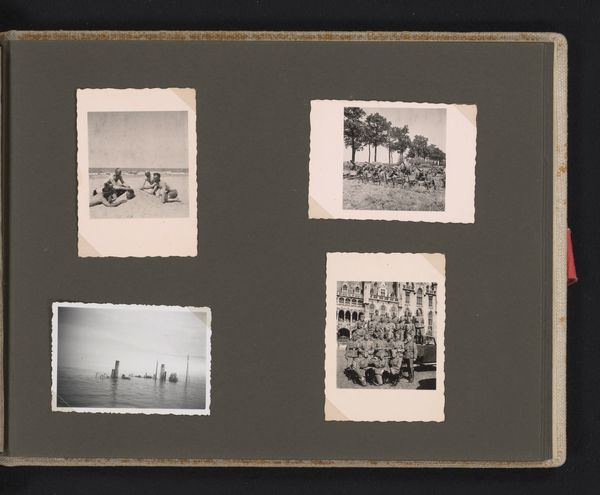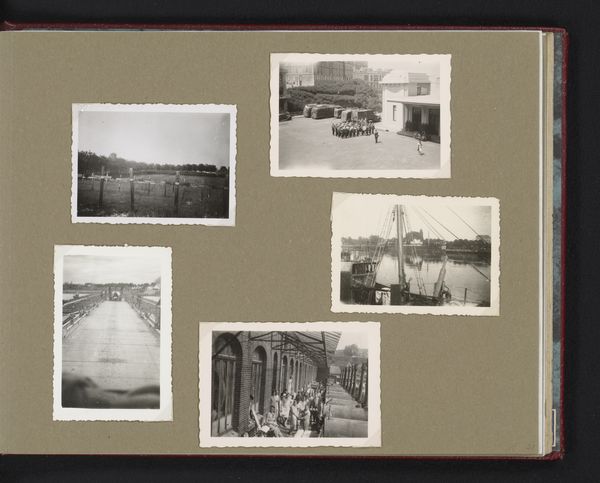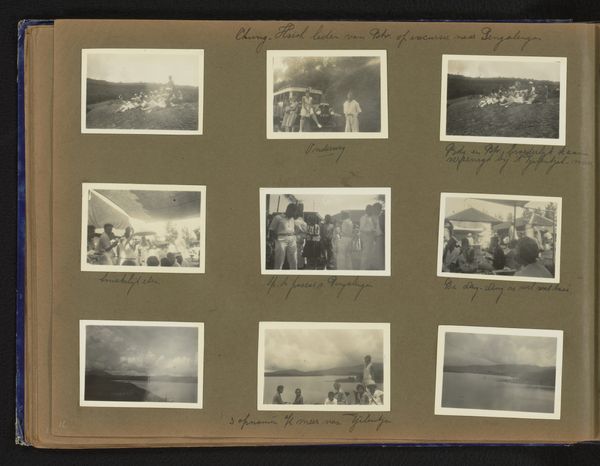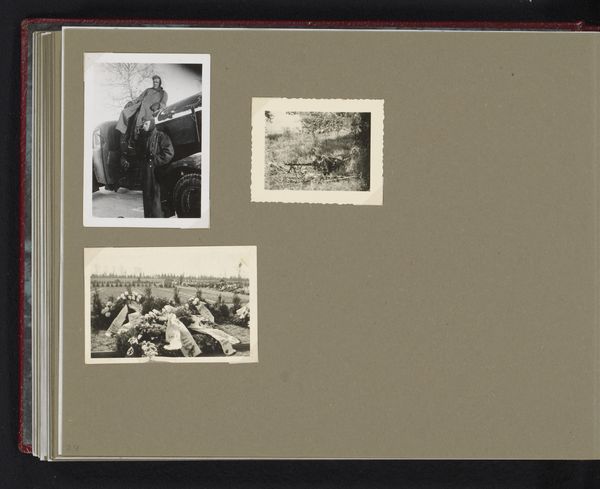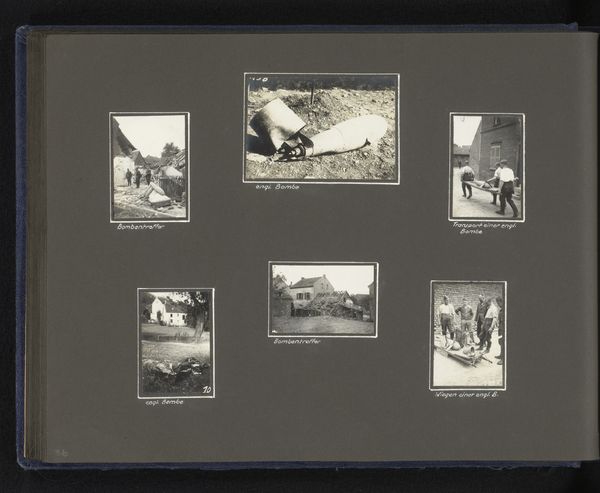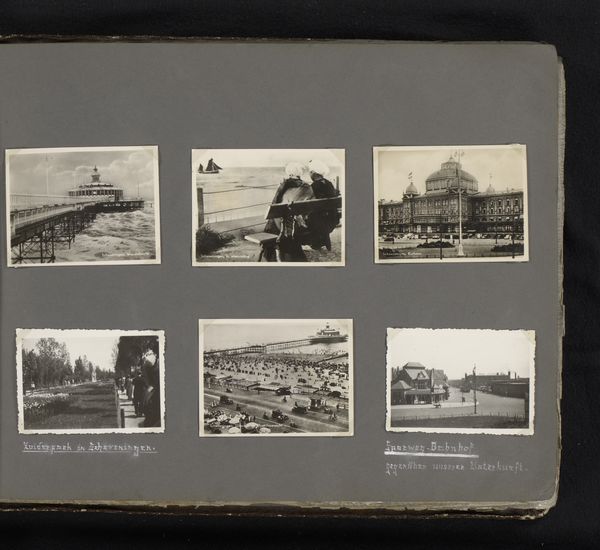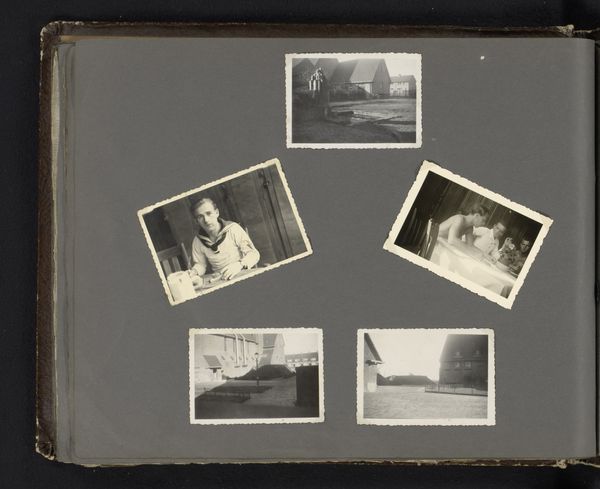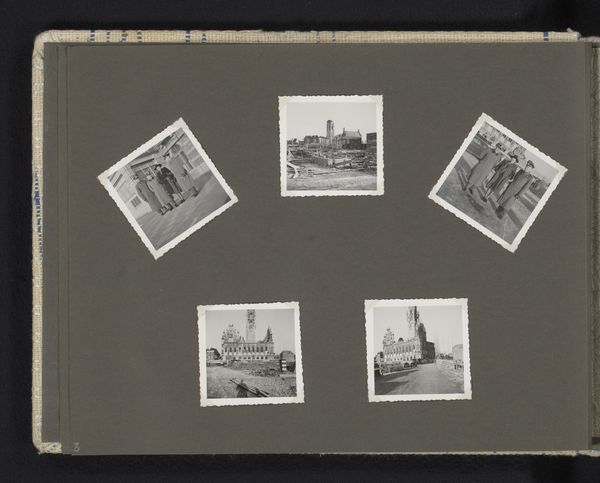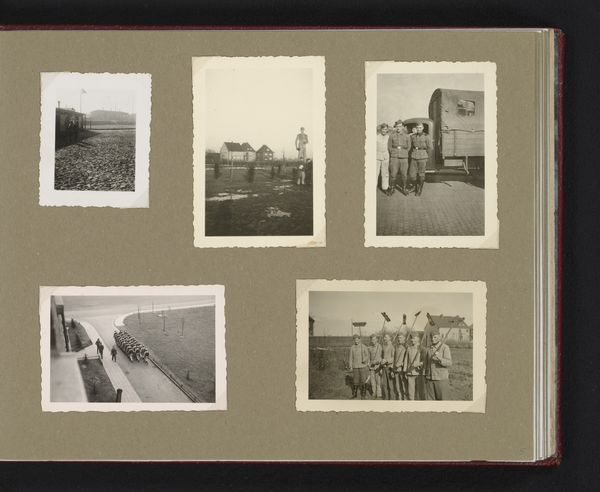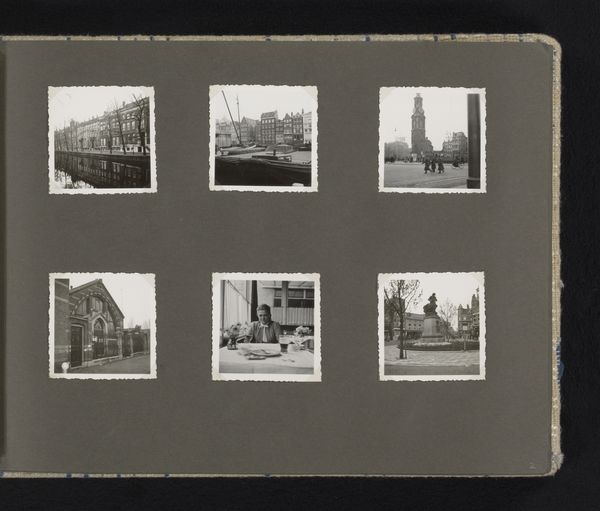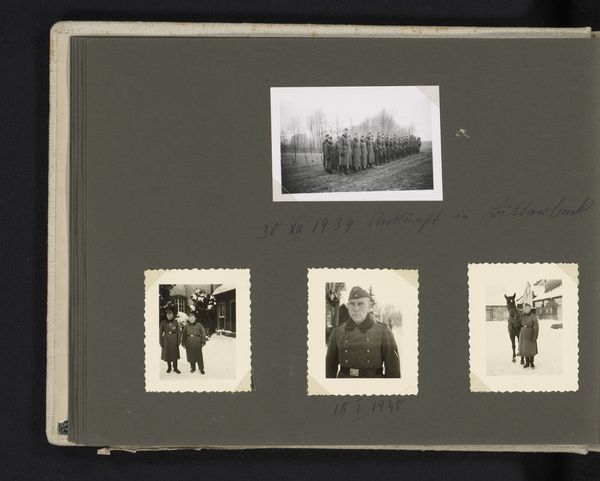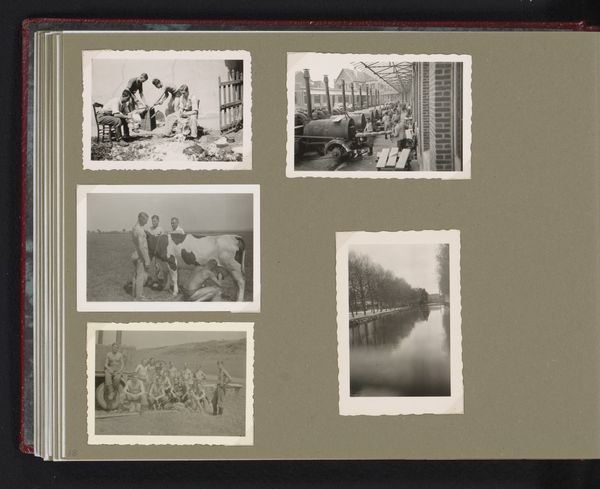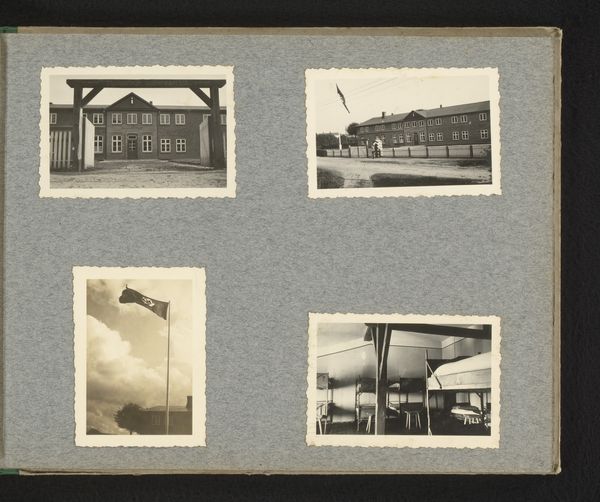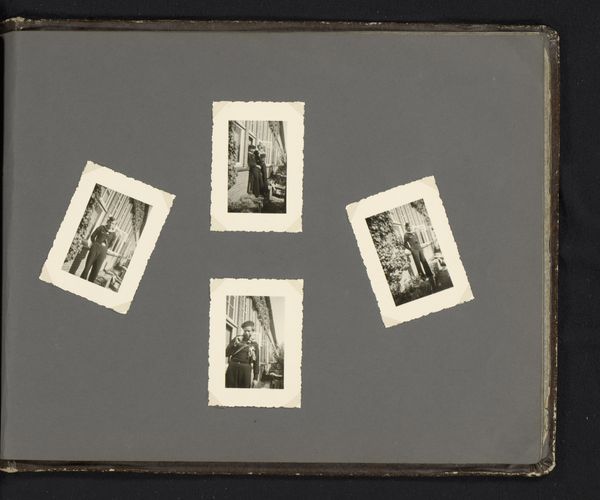
print, photography, gelatin-silver-print
# print
#
landscape
#
photography
#
gelatin-silver-print
#
cityscape
Dimensions: height 85 mm, width 135 mm, height 272 mm, width 340 mm
Copyright: Rijks Museum: Open Domain
Editor: We're looking at an album page containing several gelatin-silver prints. The central image, titled "Brand Scheveningse pier 1943," depicts what appears to be a fire near a pier, maybe taken around 1943 or 1944. There's a palpable sense of loss and devastation. How would you interpret this work in its historical context? Curator: This isn't simply a photograph; it's a document of trauma, a visual record of a community under siege. Consider the date, possibly 1943-44. What was happening in the Netherlands then? Editor: It was during the Nazi occupation. Curator: Exactly. The pier burning could be seen as a symbol of the destruction of Dutch identity, the obliteration of leisure, and the imposition of a foreign power. This image then moves beyond its aesthetic properties. We are forced to confront what role photography plays here. Do you think that the photographer consciously decided to create a form of resistance? Or what did the act of photographing itself represent for the photographer at the time? Editor: That’s a powerful way to frame it – the very act of recording could be a small act of defiance. This makes me look at the other photographs on the page, perhaps portraits, and consider who these images meant to protect. Curator: And it asks us to question the relationship between image-making and collective memory during periods of conflict and oppression. How might this image and others in the album speak to future generations about resilience? Editor: I never would have thought to see it this way, but now I realize how photography goes beyond aesthetics to become a form of witnessing and preserving cultural memory. Thank you.
Comments
No comments
Be the first to comment and join the conversation on the ultimate creative platform.
